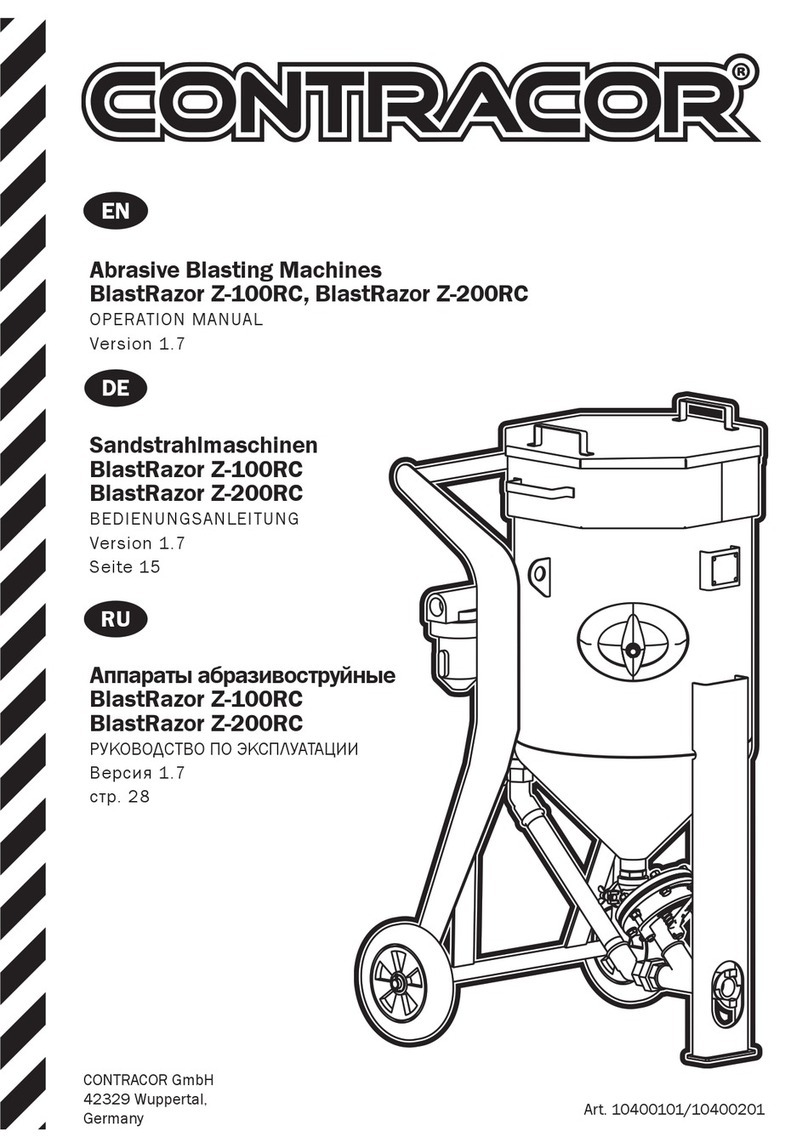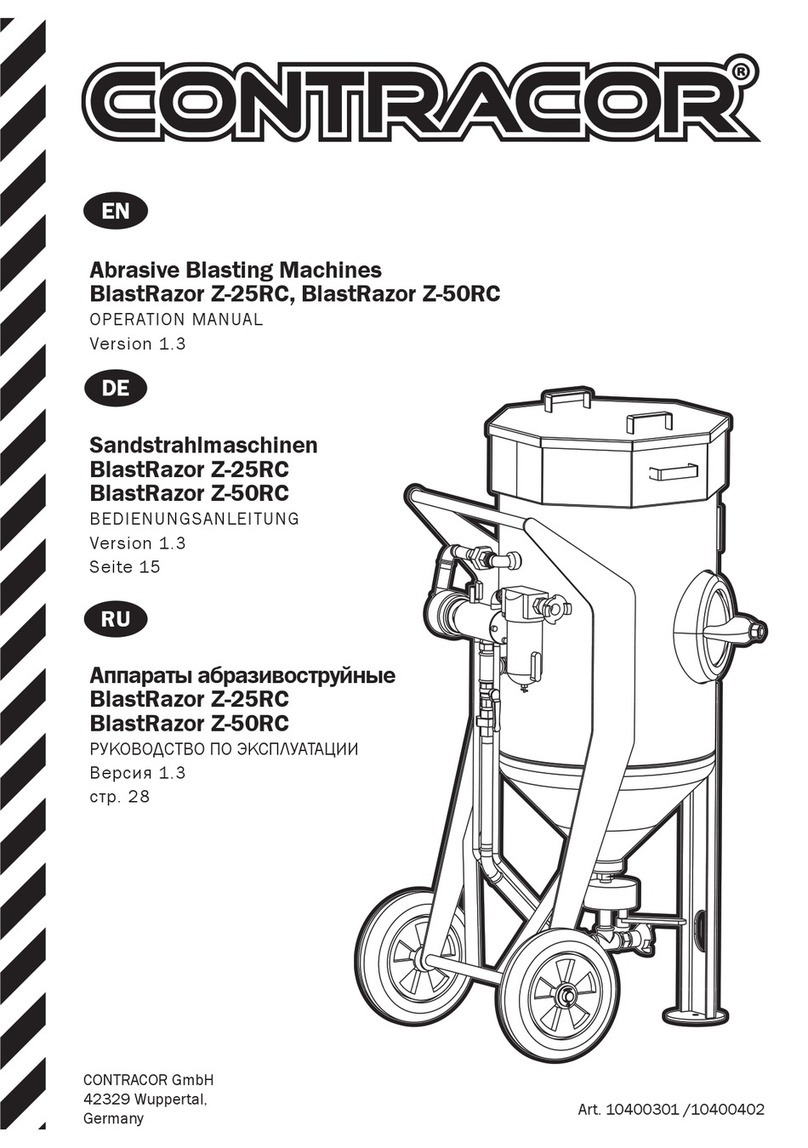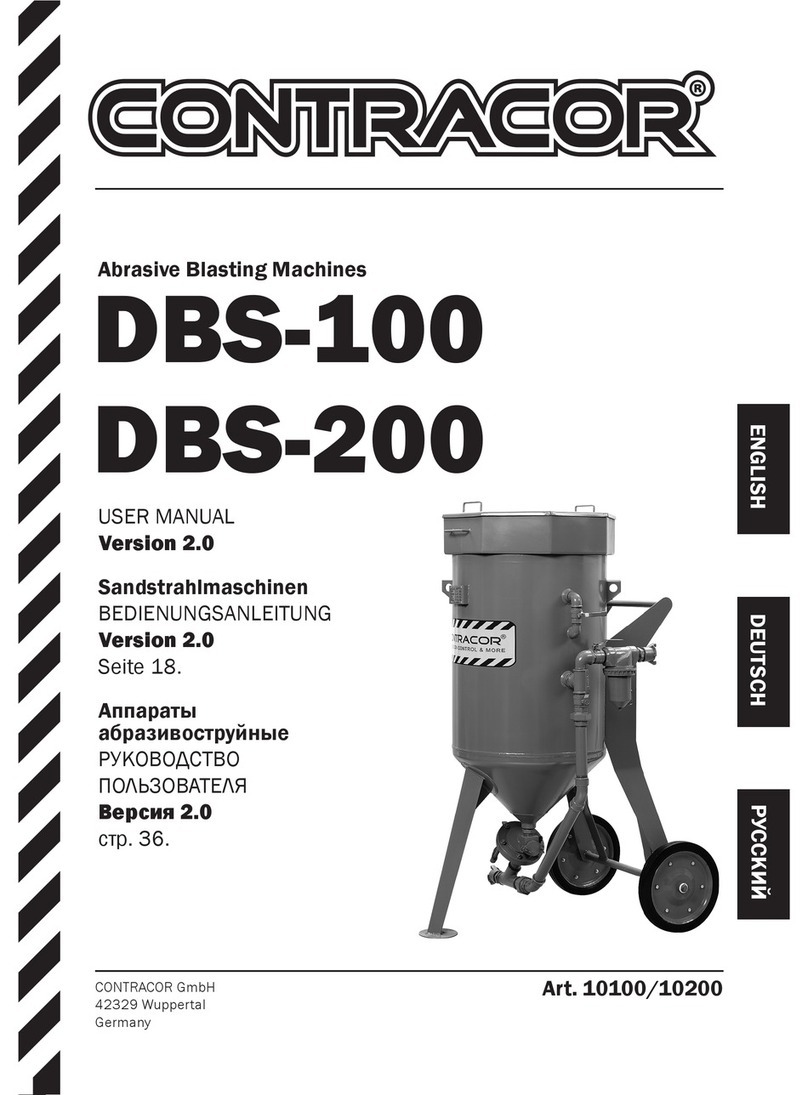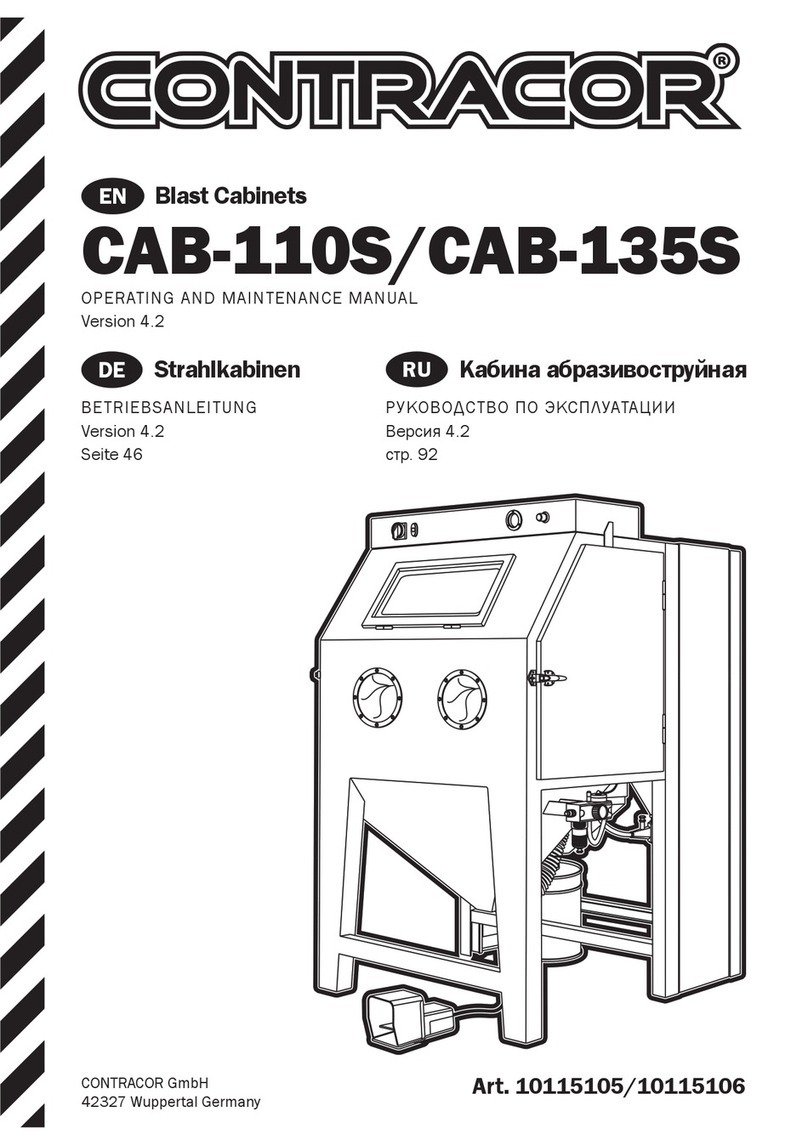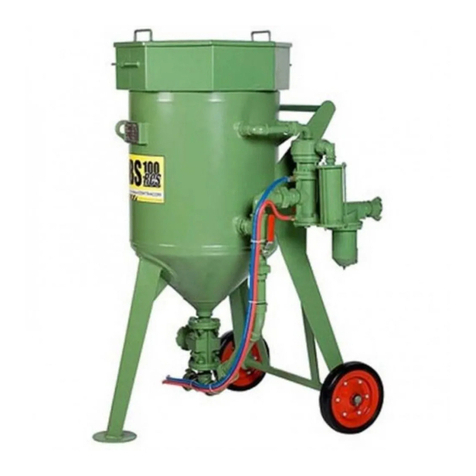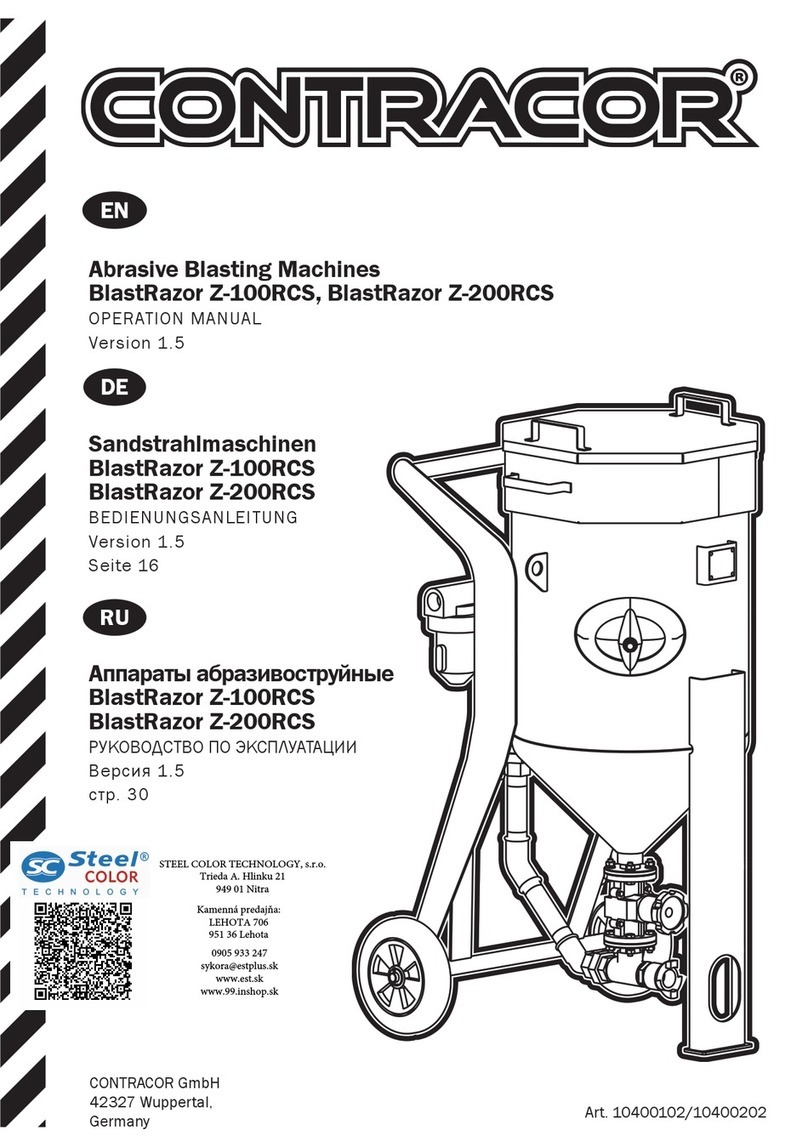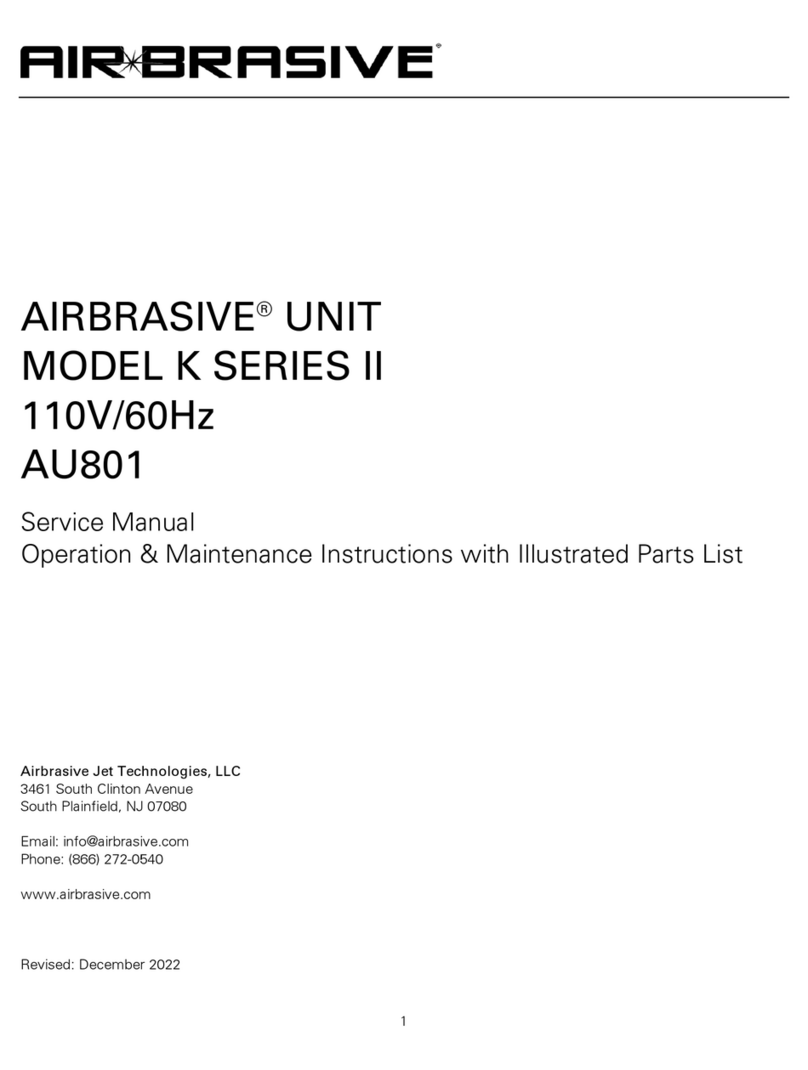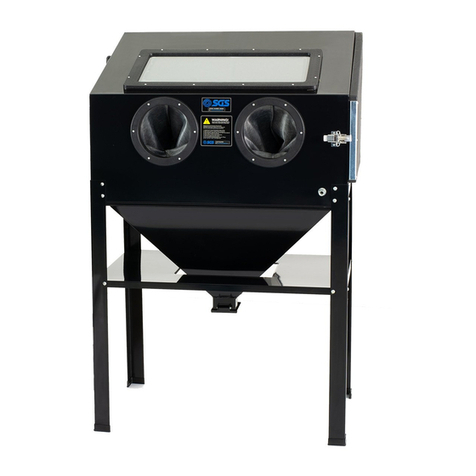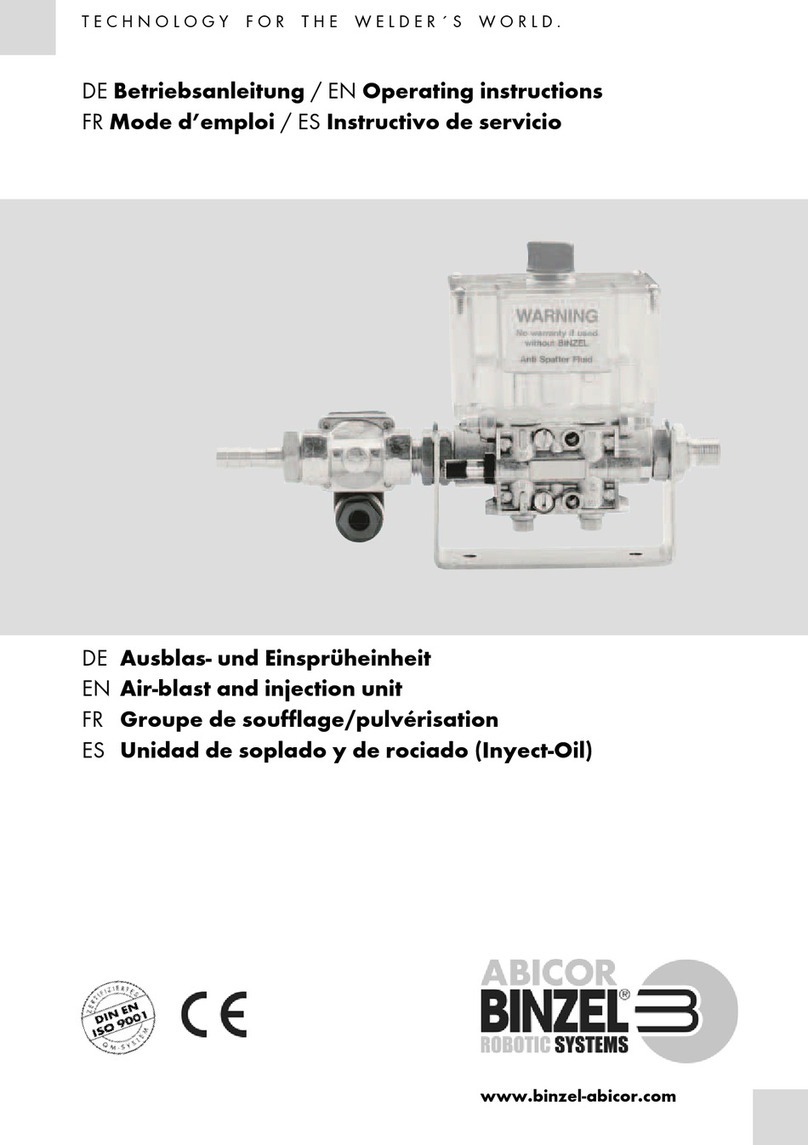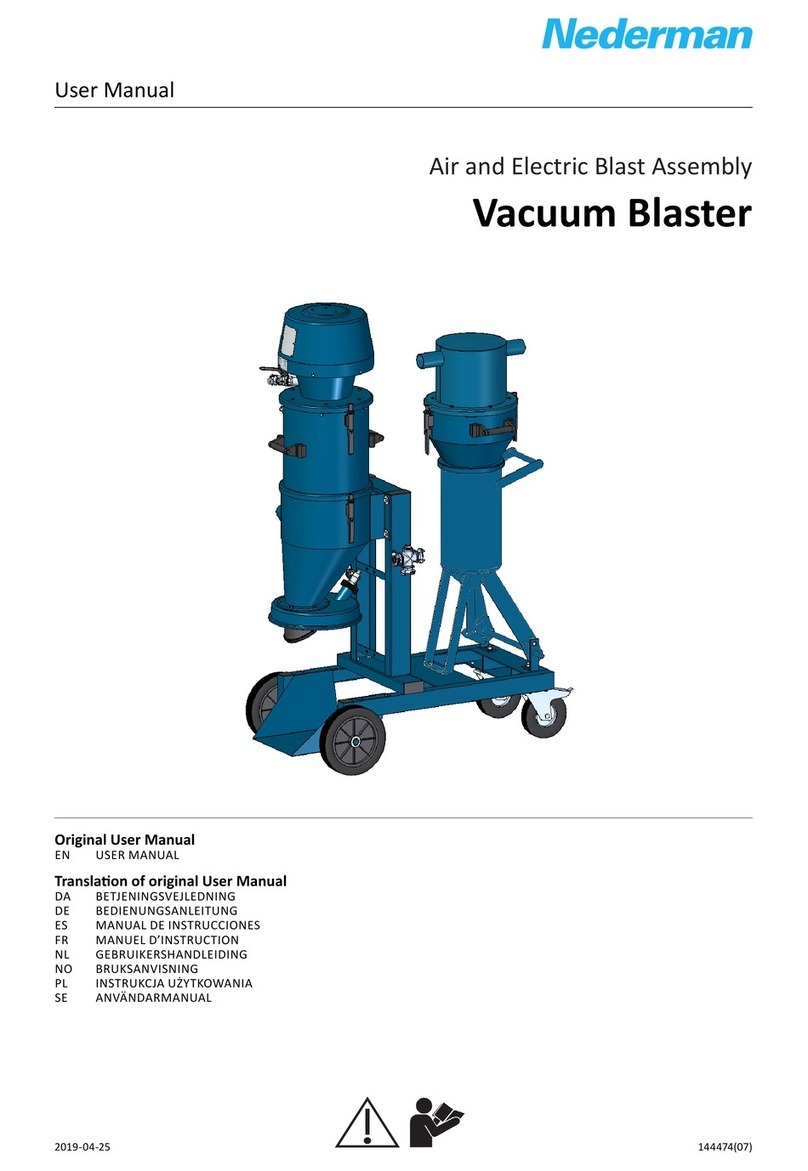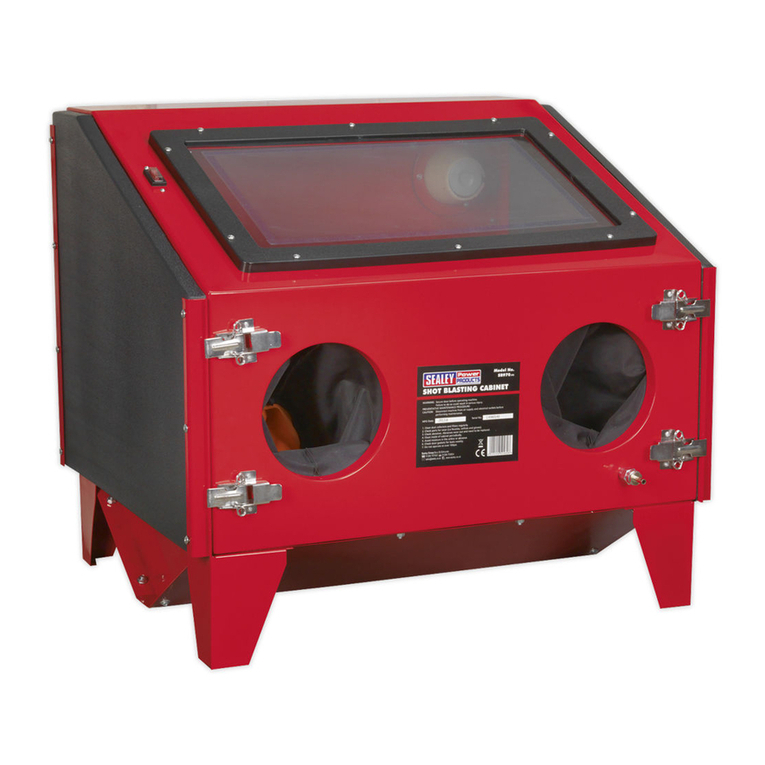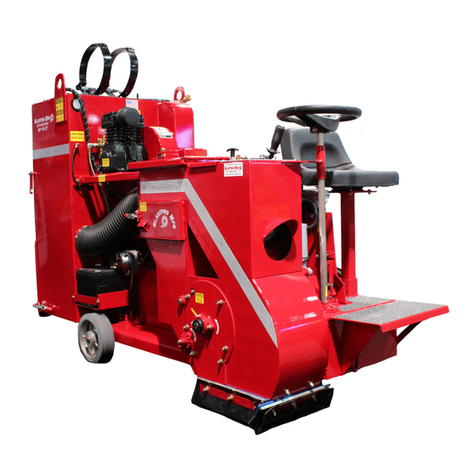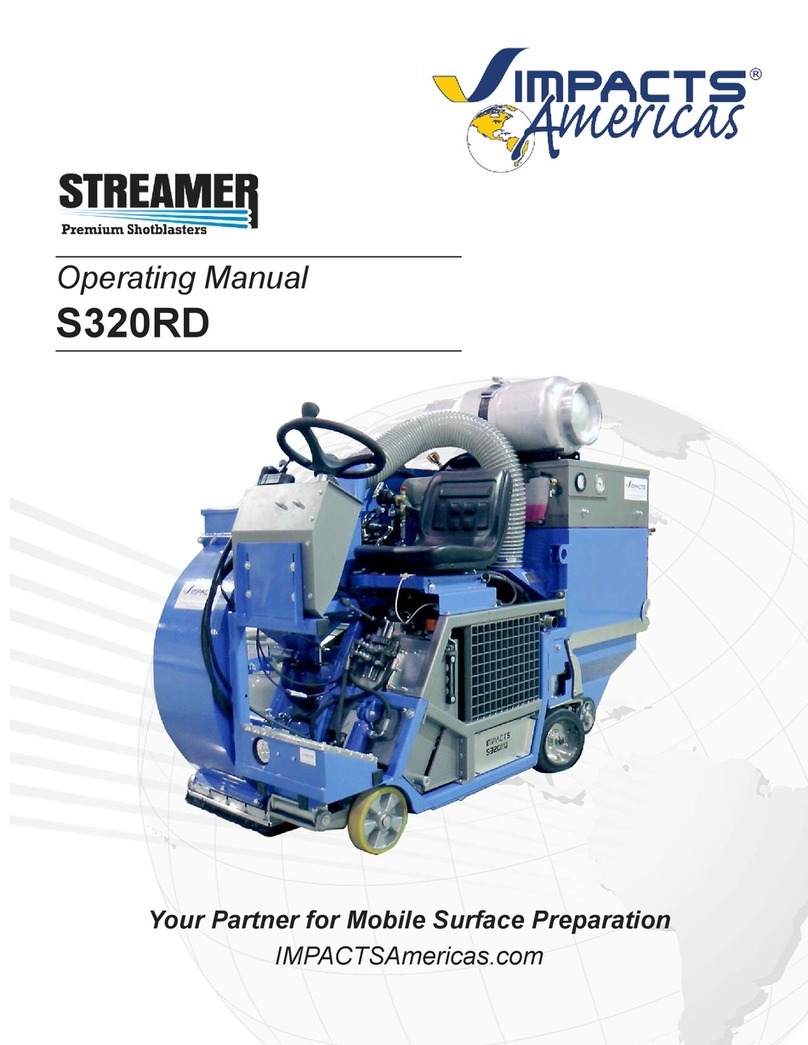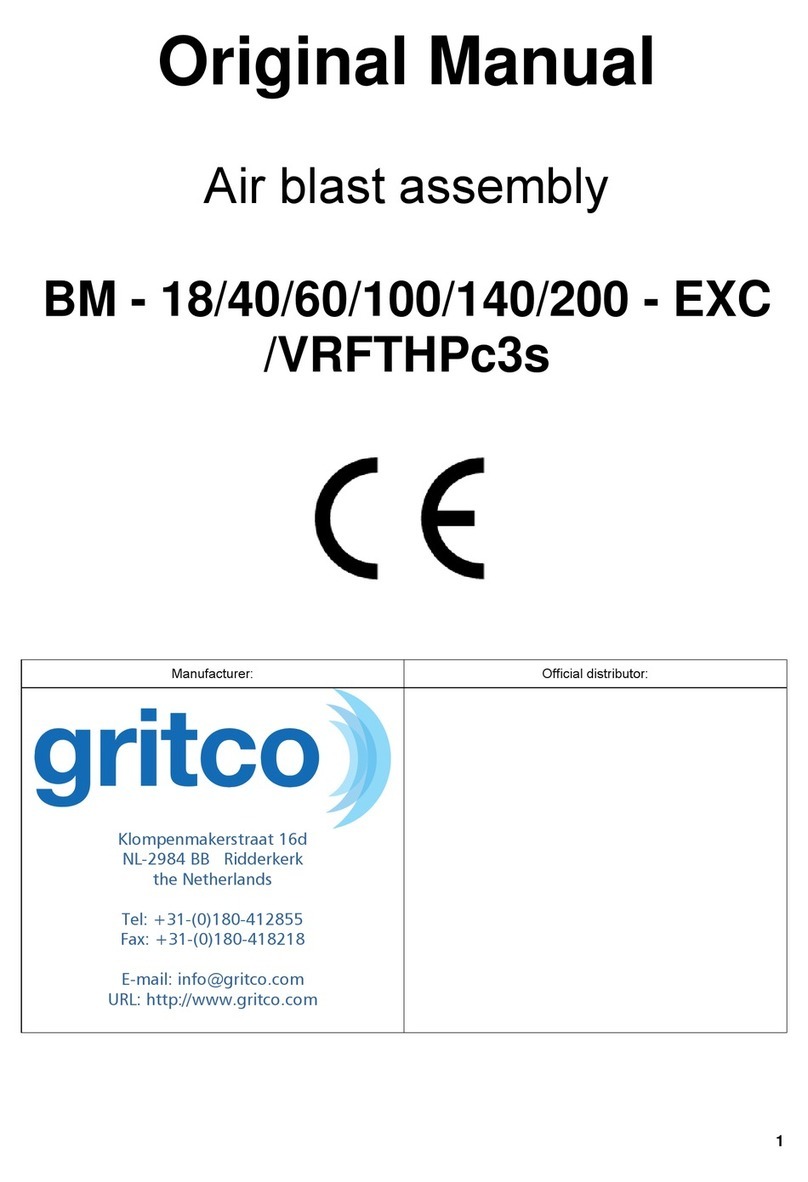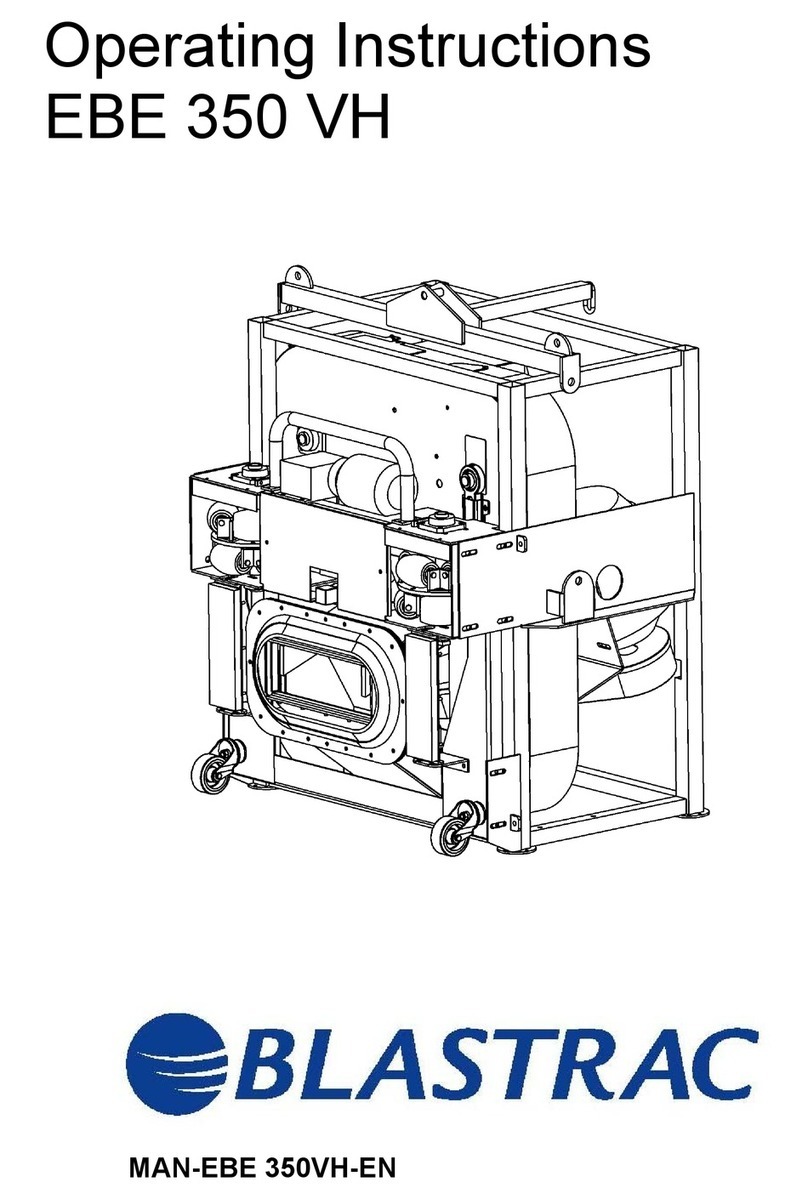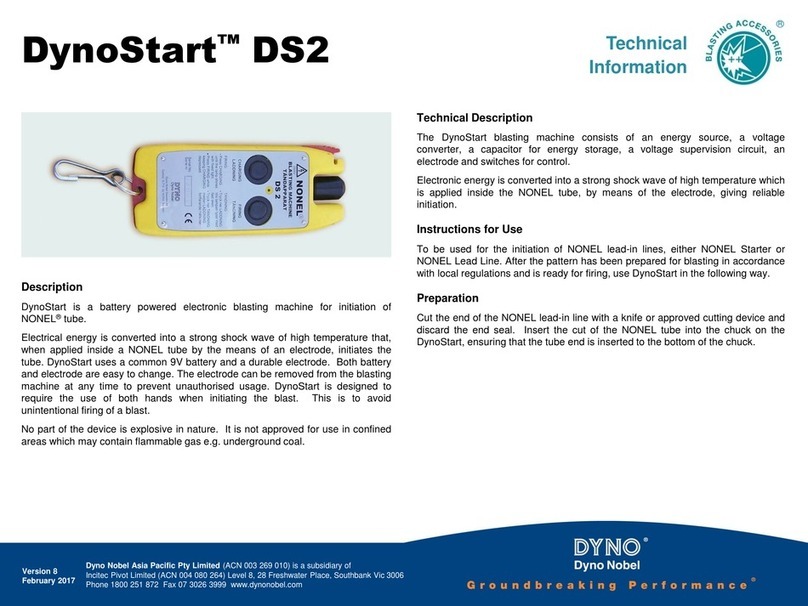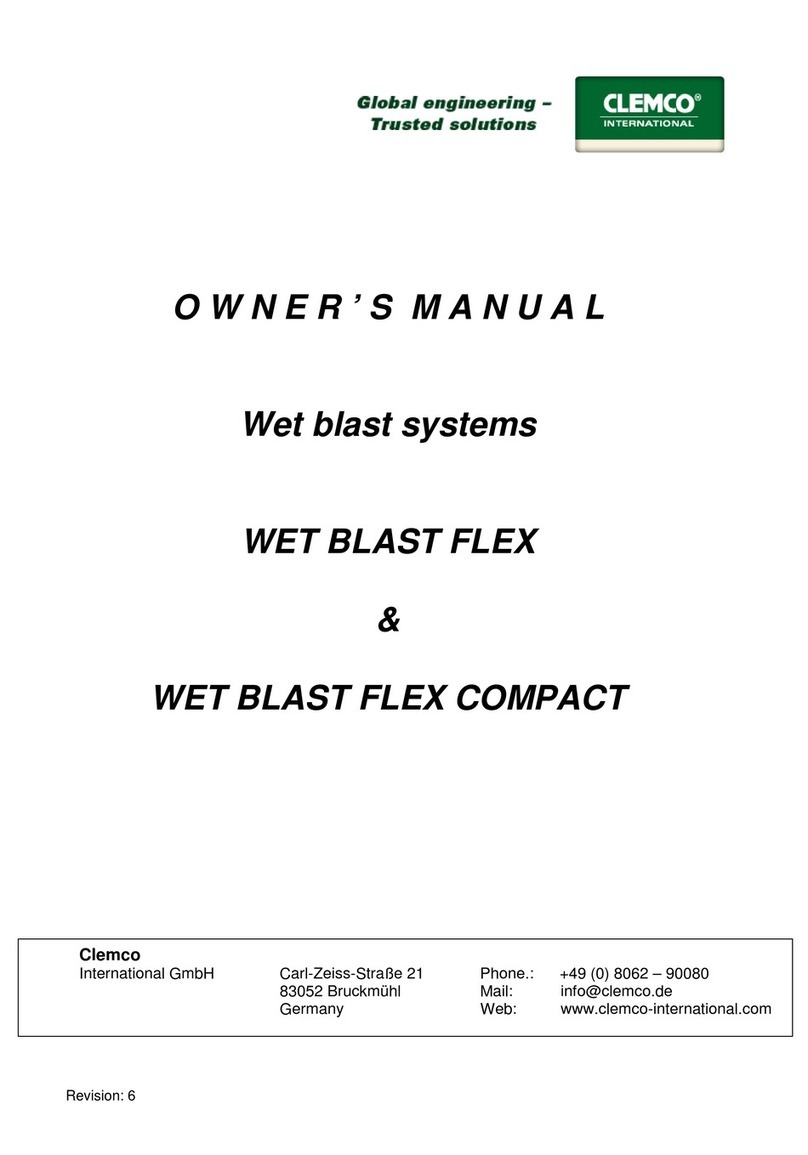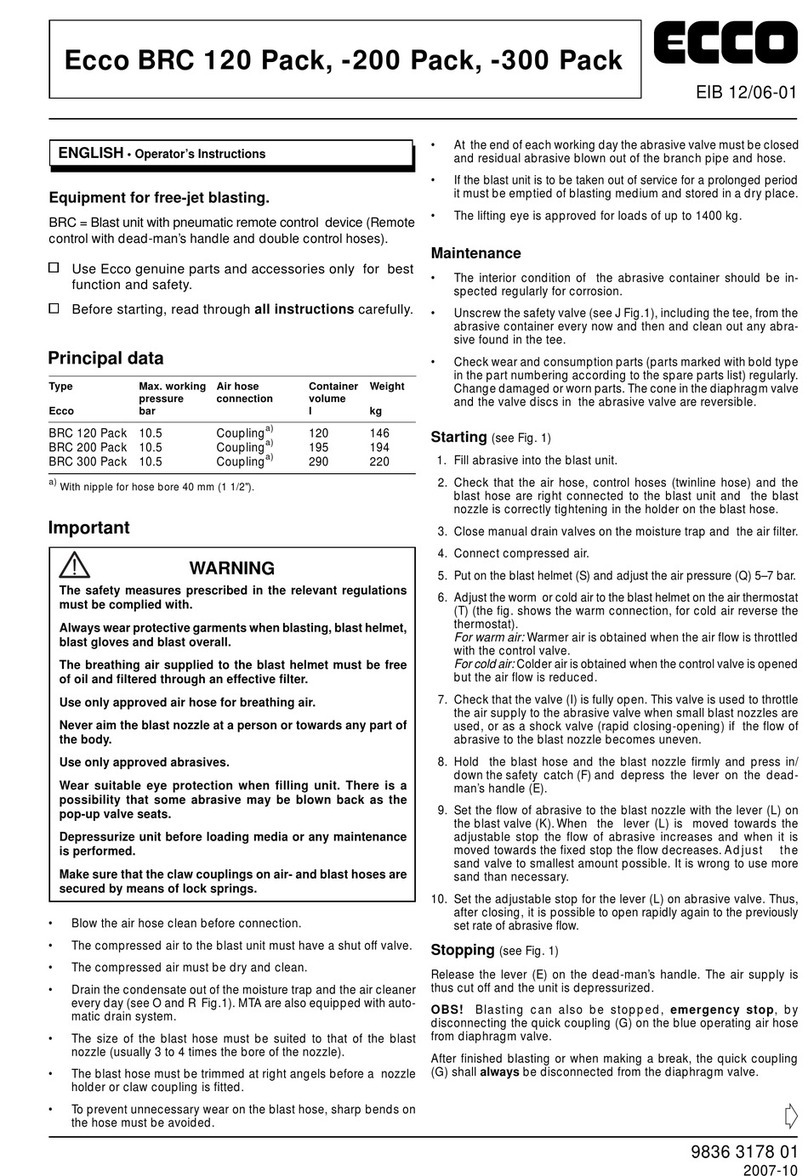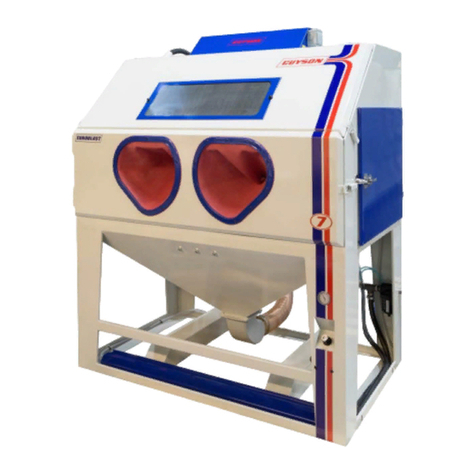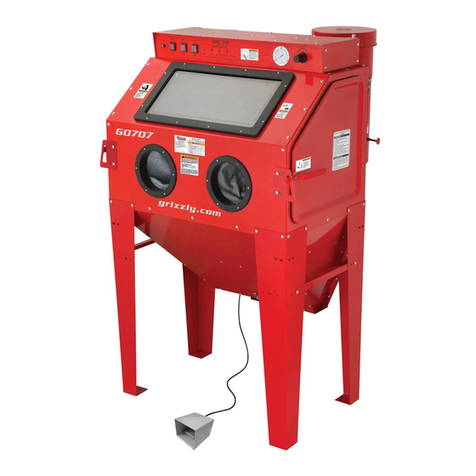
ENGLISH
CONTRACOR®CAB-110P/CAB-135P Art. 15205/15206 9
3. General information
3.1. General information
Blast cabinet production rates depend upon the size of the nozzle, the capacity of the
compressor , the working pressure, the type and size of abrasive media and the distance
between the nozzle and the area to be cleaned.
Contracor pressure-type blast cabinets are made up of four main elements:
1. A robust, welded steel cabinet enclosure,
2. A cyclone reclaimer for best possible efciency in controlling media recycling,
3. A 25 or 50 liter blast machine with a durable SGV metering valve,
4. A dust collector consisting of a highly efcient fan and pulse-cleaned cartridge lter.
3.2. Theory of operation
When the air supply is on, and the cabinet doors are closed, the blast machine is
ready for operation by actuating the foot pedal. Only by fully depressing the pedal is the
machine pressurized and blast media are propelled through the nozzle.
After striking the object being blasted, the blast media, along with nes, dust, and
by-products generated by blasting, fall through the mesh work table into the cabinet hopper.
These particles are drawn into the reclaimer for separation.
Dust and nes are rst separated from the reusable blast media. Next, the media
is screened of oversize particles, and held in the reclaimer hopper for reuse. At the same
time, dust and nes are drawn through the reclaimer into the dry lter or dust collector,
which traps the dust and discharges clean air. By releasing the foot pedal the machine is
depressurized and blasting stops, allowing blast media to recollect in the machine.
The dust collector lter cartridge is cleaned by pulsation of high-velocity compressed
air expanding against the inner surface of the cartridge. An electronic timer controls the
intervals between the pulses. The expanding air momentarily reverses airow through the
cartridge to release dust which has gathered on the outer surface. The dust falls off of the
cartridge and into the hopper for later disposal.
